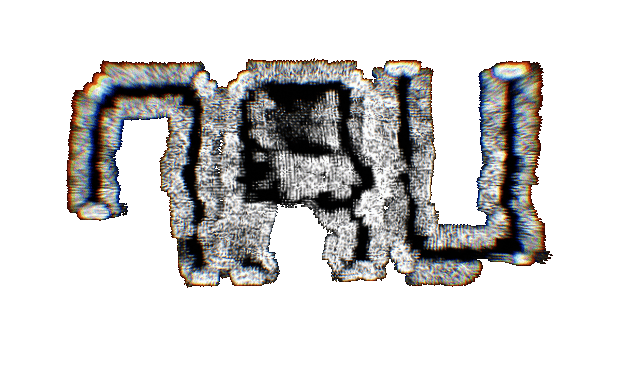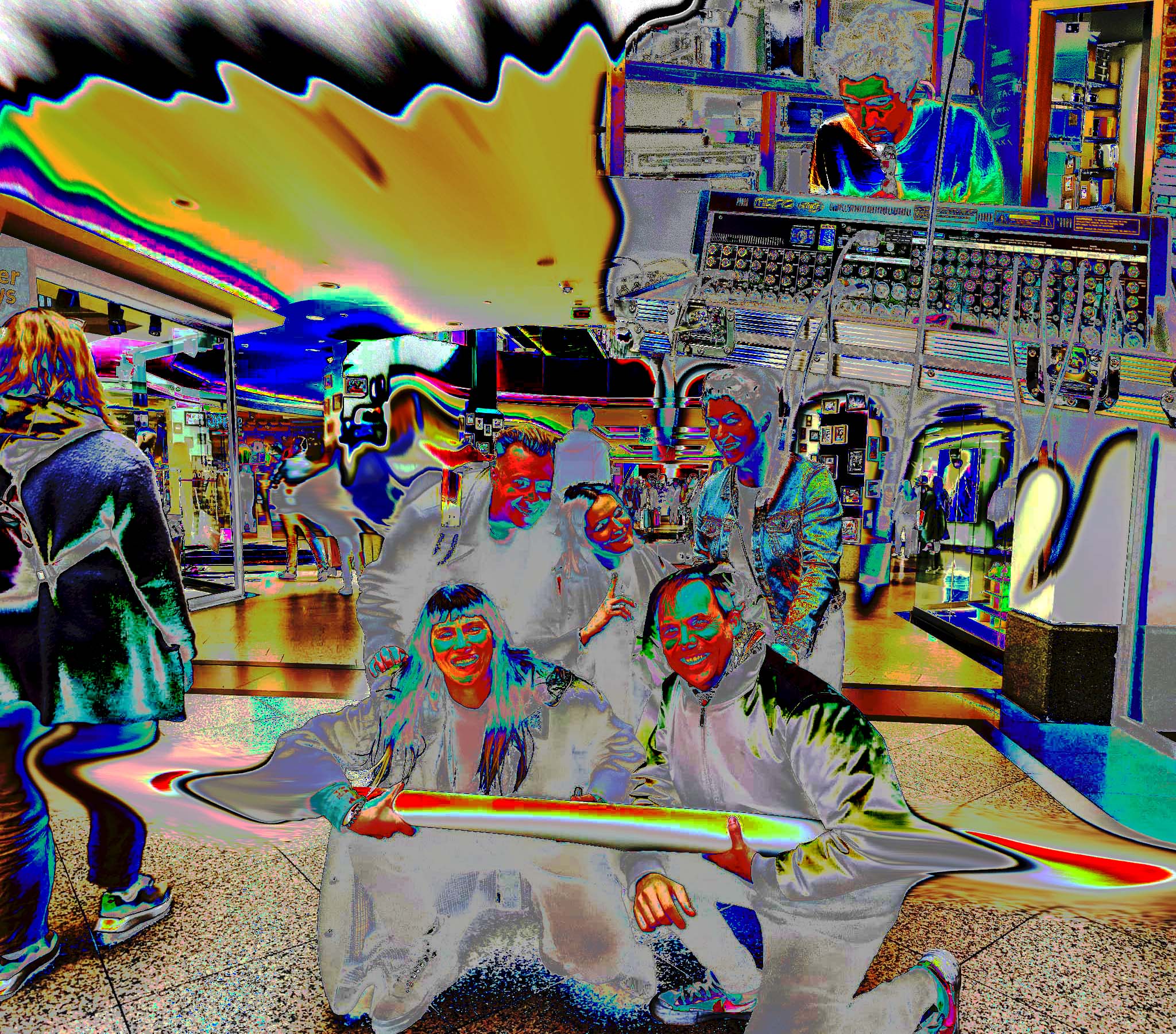

Even though it seems difficult to assess to what extent things are different from whatever came before, it does seem as if the world is in a state of crisis. This acceleration of complexity, together with issues such as climate change and a growing suspicion in regards to the power for change through political or cultural means leave us with the need for concepts that can help us understand these times of turmoil. Noise is such a concept. Therefore, it is not surprising to see an emerging interest in noise in different fields and systems as diverse as information theory; music and sonology; AI and machine learning; capitalism and finance; aesthetics; biophysiopsychosociology; complexity; etc.
Coherence, consistency, predictability and order are well-known and related concepts which have been paramount to the statisticoscientific ethos of the 20th century. As we enter the new millennium it has become more and more apparent that disarray, chaos, unpredictability and, particularly, noise, are not simply the 'disorganized' counterparts to these notions but actually harbor generative conceptual means to move beyond this elusive diametric opposition. The social and technical legacies of those developments are still reverberating, but in the 21st century, amidst a cascade of upheavals and crises in the ecological, economic, social, and aesthetic spheres, and as we move further into a digital, automated, hyperconnected paradigm, the meaning of noise has begun to be radically altered again and urgently demands to be rethought.
Since the seventeenth century, with the development of probability theory, there has been a significant shift in the understanding of order and randomness, not only abstractly but bound up with a new statistical form of social power, colonial expansion, and the onset of capitalism. In the nineteenth century this shift gave rise to statistical mechanics and dynamic systems theory, which paralleled an increasing attainment of fine control over matter and life at the same time as a dawning realization of fundamental uncontrollability. It was in the early twentieth century that the episteme was completely transformed again with the redefinition of the concepts of information and noise in information theory, computability theory, and cybernetics. This had massive scientific, philosophical, political, and artistic consequences, and there was again a simultaneous expansion and intensification of forms of control and resistance in all domains of human activity. As a result, in the 20th century the role of aesthetics as traditionally understood has been put into question, and noise disrupted the way music was practiced and perceived, becoming central to sonic and artistic practices at large as both compositional material and conceptual inspiration.21st century noise resounds across globalized neoliberal capture, burgeoning AI power, the rise of platform economies and transnational corporate empires and all their implications: neocolonialism, cyberwarfare, sweatshops, predictive policing, etc. If 20th century noise was a centrally broadcast symphonic maelstrom, 21st century noise is a user-generated cacophony that has amplified existing forms of exclusion and exclusivity. Noise in music and sound art both expresses this situation and enacts resistance to it. How can we listen to it with new ears? Is it possible to hear the structural conditions that produce in us psychological pathologies and bring us to the mental states of noise? Is it possible to improvise a non-exclusionary future amongst this noise? Can the scales of its risk asymmetry be altered? Can noise be harnessed not for competitive profit but for collective benefit? Is a new noise possible? Could this noise bring political agency?
As a way to answer these questions we propose diagramming workshops as an open door into noise’s multidisciplinary (re)interpretation. These events bring together (para-)academic transdisciplinary practitioners looking to examine the complexity and vastness of phenomena ranging from cognition to corporeality and culture, through the lens of noise.
These diagrams, also published as zines, are the outputs of our workshops. Thanks to a starting grant from the Creative Industries Fund, they are currently being redesigned as digital objects which afford more functionality (depth, scrollability, sonification, hyperlinking, different levels of access and complexity, etc.).

NRU workshop, zine distribution and sound performance at Struer Tracks, biennial for sound and listening.
Exact dates and times TBA.

Aesthetics of Noise: Presenting N.R.U.
In this last series of online talks, the members of the NRU collective, Miguel Prado, Sonia de Jager, Inigo Wilkins, Martina Raponi, Mattin and, hosting, Cécile Malaspina, will present their recently published books and doctoral projects, bringing a diversity of theoretical and artistic perspectives to the problematic of “noise,” ranging from interference in the communication channel, thermodynamic disorder, stochastic variation, to diverse cultural phenomena linked to sound and information. The books Irreversible Noise by Inigo Wilkins, Social Dissonance by Mattin, The Noise in Noise by Miguel Prado Casanova, as well as Psofotopias: Sounding out the Unheard Infrastructure of Sound by Martina Raponi and the doctoral thesis project by Sonia de Jager will be presented. This seminar closes the series on the aesthetics of noise and concludes Cécile Malaspina's program at the Collège international de philosophie.
Org. Cécile Malaspina, Directrice de programme, Collège international de philosophie, Paris, in partnership with Patrick Ffrench, King's College London and Miguel Prado Casanova, University of the West of England.
February 27 (5pm UK time), Cécile Malaspina, Collège international de philosophie, Paris
March 27 (5pm UK time), Mattin, Tromsø Academy of Arts (UiT), author of Social Dissonance
April 24 (5pm UK time), Dr Miguel Prado Casanova, University of the West of England, author of The Noise in Noise
May 29 (5pm UK time), Martina Raponi, doctorante, Amsterdam University, author of Psofotopias: Sounding Out The Unheard in Noise
June 27 (5pm UK time), Inigo Wilkins, author of Irreversible Noise
October 1-6, 2024.
UNSOUND announcement: The discourse program will also host the multifaceted Noise Research Union, whose members – Martina Raponi, Sonia de Jager, Cécile Malaspina, Mattin, Miguel Prado, and Inigo Wilkins – will lead diagramming workshops opening the doors into noise’s multidisciplinary (re)interpretation. Noise Research Union representatives will also be joined by scholar and translator Patrick Leftwich in a discussion on alien noise.
September 23 & 24, 2024.
RADIUS will host the two-day symposium ON DIALOGICAL REASON, organized by T. van Gemert and S. de Jager, with a series of presentations by Mahault Albarracin, Ray Brassier, Catarina Dutilh Novaes, and Reza Negarestani. The event will also host NRU member Inigo Wilkins as interlocutor/moderator. The aim of this event is to bring together philosophers, artists, historians, logicians, social scientists, mathematicians and every other being interested in discussing the themes described above. The content of the event will be reflected in the form: all presentations will be followed by dialogues, interaction will be favored over exposition, (critical) engagement will be valued, haranguing not appreciated. Inquiries and applications (please see the CfA on philevents.org) can be sent to Ties van Gemert (P.T.vanGemert at tilburguniversity.edu) and Sonia de Jager (dejager at esphil.eur.nl).
November 20-26, 2023.
Sonic and Somatic Transdisciplinary Research and Practice Program (SSTRAPP).
SSTRAPP’s second program is dedicated to noise. Each day will begin with a presentation of theory, led by the six members of the Noise Research Union (Cécile Malaspina, Mattin, Miguel Prado, Sonia de Jager, Martina Raponi, and Inigo Wilkins). These sessions will explore a range of topics, including the many senses of noise, computation and cybernetics, and noise in the theories of information; they will explore acoustic and psychoacoustic noise, the noise of technical filters, ancient noisicians and the modern amplification of noise; unsilencing and noise as resistance, diasporic musicking and concurrent noise; sonicliminal affects and noise at the borders of sense; social dissonance, objective phenomenology, and experimental languages and transumweltic variations. Following discussions related to these topics, the afternoons will be devoted to practical projects inspired by the notions of sound capture and fugitive noise, taking a variety of experimental routes, from working with samples and loops to exploring the latent space of the voice. You’ll work in a group to devise an installation or performance inspired by what you’ve learned, with the final day consisting of performances and presentations.
Conference participation (postponed until further notice), organized by Evrim Bayındır.
Format: The group would have presented diagram sonifications, noise research as well as conduct a diagramming workshop.
Saturday May 15th, 2023.
12:00-13:00 - Online soundscape.
13:00-15:30 - Presentation and Q&A.
Format: The group will present their research as well as conduct a diagramming workshop.
STRP Scenario #22: Silence, (im)possible absences (check website for exact location updates).
We welcome participants of all backgrounds to join the discussion. Please sign up to the workshop by sending a few lines about your interest in participating to noiseresearchunion at protonmail dot com. Given limited capacity we will have to keep the size of the group under 30 people. The main tasks during the workshop will be those of dialogue and diagramming. We will discuss interpretations together, identify some common lines of thought and divide into groups in order to explore these in depth by way of diagrams. We will reconvene and attempt to morph the group diagrams into collective ones. Our approach is nondisciplinary and completely open to questions and challenges, we are united by our interest in noise but not by our individual interpretations. FYI: the workshop process will be filmed, for the most part. Should you want to remain unfilmed/anonymous please indicate this in advance.
Wednesday May 18th 2022:
10:00-13:00 - Diagram workshop.
20:00-23:00 - Diagramatic Discompositions.
Format: Based on the diagrams produced during the morning workshop, the NRU will improvise a series of explanations and sonic (dis)compositions, worked out collectively through intermittent voiced/sounded steps. Starting off with a description and introduction into a diagram, the group will then move on to produce sounds. Thereafter, another diagram becomes talked about, followed by a sonic improvisation, and so forth. After this series of decompositional movements we move onto a break, and continue with different diagrams and sounds via the same format until the end of the evening. The audience is invited to participate, should they wish to join in interpreting the diagrams as well.
Café OTO, 18-22 Ashwin St, London E8 3DL, United Kingdom
Format: The group will present their research as well as conduct a 2-day diagramming workshop.
This event was partly made possible by V2_ Lab for the Unstable Media, Rotterdam
SOOPA, 48 Largo da Fontinha, Porto
Cécile Malaspina, Inigo Wilkins, Martina Raponi, Mattin, Miguel Prado, Sonia de Jager

The NRU diagrams are collaborative creations of the workshop participants + NRU, and translated digitally by NRU + Diede van Ommen. Since its inception, NRU has been funded and supported by the NRU members, and depending on the event, also by: SOOPA, v2_ Rotterdam, Collège International de Philosophie, Bidston Observatory, Café OTO, Stimuleringsfonds, UNSOUND Festival, and more.
For any questions please contact us at: noiseresearchunion at protonmail dot com
For more information about NRU founding members:
The NRU will soon start organizing meetings, open to anyone interested in joining the union, more information coming soon.
Self-organized criticality (image and metaphor): Abelian Sandpile Model rendered by Colt Browning, CC license.
Other images by NRU.